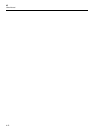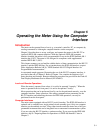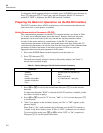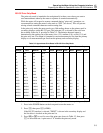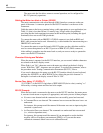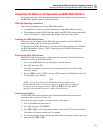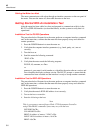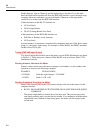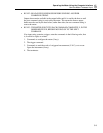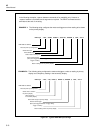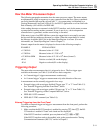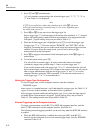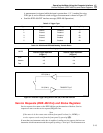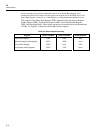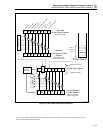
45
Users Manual
5-8
Enable Register" later in Chapter 5) and the input string is discarded. If, on the other
hand, the input buffer becomes full when the IEEE-488 interface is used, the meter stops
accepting characters until there is room in the buffer. Characters in the input buffer
cannot be over-written with the IEEE-488 interface.
Valid terminators for the RS-232 interface are:
• LF (Line Feed)
• CR (Carriage Return)
• CR LF (Carriage Return/ Line Feed)
Valid terminators for the IEEE-488 interface are:
• EOI (End or Identity) on any character
• LF (Line Feed)
In some instances, a terminator is automatically transmitted at the end of the host’s output
string (i.e., the meter’s input string). For example, in Fluke BASIC, the PRINT statement
finishes with a CR LF pair.
Typical IEEE-488 Input Strings
Two typical strings that could be sent to the meter over the IEEE-488 interface are shown
in Figure 5-1. These strings are written in Fluke BASIC to be sent from a Fluke 1722A
Instrument Controller.
Sending Numeric Values to the Meter
Numeric values can be sent to the meter as integers, real numbers, or real numbers with
exponents as shown in the following examples:
EXAMPLE EXPLANATION
+12345689 Sends the signed integer "+12345689"
-1.2345E2 Sends-1.2345 x 102
Sending Command Strings to the Meter
Observe the following rules when you construct strings to be sent to the meter over the
computer interface:
• RULE 1: READ METER’S OUTPUT BUFFER ONLY ONCE FOR EACH QUERY
COMMAND.
The meters output buffer is cleared after it has been read. This prevents previously
read data from being read a second time by mistake. If you attempt to read the meters
output buffer twice without an intervening query, the meter will not respond to the
second read.



